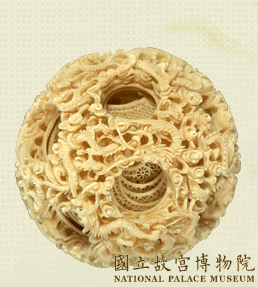A few years back, we had visited the Forbidden City in Beijing, which is home to numerous Chinese artefacts and treasures. Little did we realise that there was a bigger treasure trove right across the Taiwan Straits in Taipei!
And today was our chance to see some of these treasures.
And we proceeded from the National Revolutionary Martyrs' Shrine in the Zhongshan District to the Shilin District to visit the National Palace Museum.
The museum has quite an interesting history that reflects the tumultuous times China had faced since the early 1900s. The museum was originally established as the Palace Museum in Beijing's Forbidden City in October 1925, shortly after the expulsion of the last emperor of China. The museum housed valuables of the former Imperial family.
In 1931, realising that a Japanese invasion was imminent, Chiang Kai-shek ordered that the museum evacuate its exhibits out of Beijing to prevent them from falling into the hands of the Japanese Army. The exhibits were initially moved to Shanghai and then to Nanjing. As the Japanese Army advanced further, the collection was moved around various towns. After the surrender of the Japanese in 1945 and cessation of hostilities, the collection was shipped back to the Nanjing.
But soon there was another crisis on the horizon. The communists were gaining territory and realising that the defeat of Nationalist forces was imminent, Chiang Kai-shek ordered that artefacts be shipped to Taiwan. However, some artefacts were left behind in Beijing when the communists came in. A total of 2,972 crates of artefacts from the Forbidden City moved to Taiwan, accounting for only 22% of the crates that had originally transported south. But it is believed that these pieces represented some of the very best of the collection.
With American aid, the museum was constructed in the 1960s. Since its construction the museum has undergone several expansions to create space for all exhibits. But what you see in the museum is only the tip of the iceberg - of 696,344 artefacts the museum has, only 6,000 are exhibited at a given point of time.
The museum covers artefacts from the Qin Dynasty of 200BC to the Qing Dynasty that ruled China till 1911. Unfortunately we could only see a bit of the museum as we had only half an hour to explore. And sadly photography is not permitted within the premises.
The exhibits did seem quite priceless and intricate. And what they say is indeed true - the collection over here is far better than what have in Beijing! And Taiwan often uses this cultural heritage as a tool of diplomacy - these exhibits are often displayed in museums abroad - Europe, Japan and the United States. Despite the warming of ties with the Mainland, they have avoided organising exhibitions there, as fears that the Mainlanders may impound and seize these treasures.
The memory of a couple of exhibits will always remain in our minds. One such exhibit was an amazingly detailed painting titled "100 Horses" or "100 Steeds", by Giuseppe Castiglione, an Italian Jesuit, missionary. Giuseppe was also a painter at the imperial court, who adopted a Chinese name Lang Shi-Ning. He arrived China in 1715 and served the first three emperors of Qing Dynasty and was buried at Forbidden City, in 1766.
The painting is more than seven meters long and depicts a scene of a herd of horses out on a pasture in autumn. This painting blends Chinese art with Western painting skills.
One such exhibit was that of an ivory ball that served as an imperial decorative piece. This ball was carved from a single solid piece of ivory to form successive openwork spheres inside, serving as either a hanging or resting decorative piece. The piece has 21 spheres inside and has dragons and clouds engraved.
We wished we had more time to explore the museum and for sure, we have to come back some day. But for now, we head to Taipei 101!
The exhibits did seem quite priceless and intricate. And what they say is indeed true - the collection over here is far better than what have in Beijing! And Taiwan often uses this cultural heritage as a tool of diplomacy - these exhibits are often displayed in museums abroad - Europe, Japan and the United States. Despite the warming of ties with the Mainland, they have avoided organising exhibitions there, as fears that the Mainlanders may impound and seize these treasures.
(Source: Wikipedia)
The painting is more than seven meters long and depicts a scene of a herd of horses out on a pasture in autumn. This painting blends Chinese art with Western painting skills.
(Source: Digital Taiwan Archives)
One such exhibit was that of an ivory ball that served as an imperial decorative piece. This ball was carved from a single solid piece of ivory to form successive openwork spheres inside, serving as either a hanging or resting decorative piece. The piece has 21 spheres inside and has dragons and clouds engraved.
We wished we had more time to explore the museum and for sure, we have to come back some day. But for now, we head to Taipei 101!

Interesting
ReplyDelete